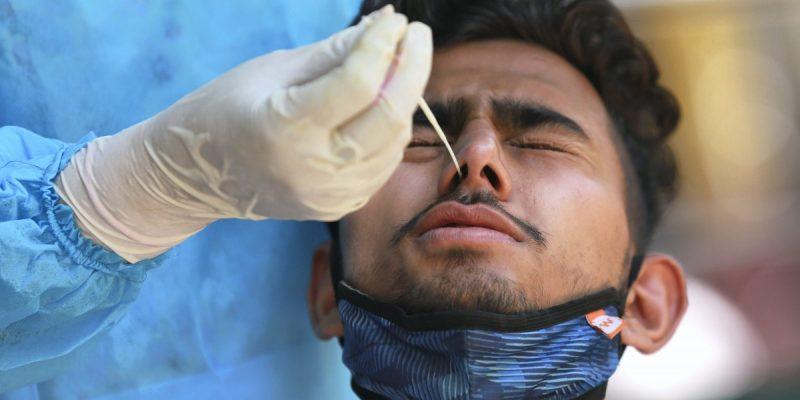Explained: What are BA.4 and BA.5, BA.2.12.1, and BA.2.38 — the new variants of coronavirus in circulation currently?
The current surge in the Covid-19 case is due to the sub-variant of BA.2 from Omicron-who pushed the third wave in January, along with BA.1 and and other sub-variants that have been branched out of it, called BA .2.38.
Earlier this week, Delhi reported several of his first cases from the BA sub-variant.5 from Omicron-This was one of the sub-variants that caused an increase in cases in South Africa a few months ago. The first BA.5 case in India was reported at the end of May in Telangana.
Sub-variant cases that encourage surge in many places globally also increase in India, but now they only contribute a small portion of the case. What is important, experts believe that there is no clinical significance of this change.
The sequence of genomes uploaded to the global database Gisaid shows that BA.2.38 – which is branched from BA.2 – dominant in this country, contributes 30% of all sequences over the last 30 days.
This was followed by the BA.2 Sub-Variety itself, contributed 28% of the sample, showing the analysis of GISAID data by the plague.info.
(Ocbreak.info is a project from scripps research that collects covid data in all scientific sources to track the pandemic trend and integrate research and data sets into one library that can be sought.)
Although BA.4 and BA.5 were detected in the country at almost the same time (in early May), BA.5 had spread faster, contributing 7% of the order uploaded to the global database in the last 30 days
So far, India has reported at least 120 sub-variant in BA.5, most of them in Tamil Nadu and Karnataka (each 43). The other sub-variants who led the Covid-19 surge in South Africa-BA.4-33 cases have been identified, which contributed less than 1% of the sequence uploaded to the global database over the past 30 days.
Another sub-variant of Omicron, called BA.2.12.1, has also been circulating-and has contributed 5% of the last 30 days. At least 190 sequences of this sub-variant have been uploaded to the global-progress database from them from Telangana (69), Karnataka (46), and Tamil Nadu (45).
What do we know about these sub-variants so far?
* BA.4 and BA.5 were detected by South Africa in January and February. The variant triggers waves of infection, and becomes dominant in May this year. They are now spreading to Europe, with BA.5 being the dominant variant in Portugal.
BA.4 and BA.5 have about 13% to 15% of the advantages of transmission compared to BA.2, and can also avoid some immunity. This variant has two mutations that are considered to be a concern by researchers: F486V that have been associated with laboratory studies with the ability of the virus to avoid some of the existing immunity, and the L452R found in the Delta variant associated with the ability to infect the lungs.
However, the experience of other countries shows that variants do not cause increased diseases, inpatient and death. This time, the doctor barely saw Pneumonia Covid-19 in patients, which had caused an increase in oxygen and death requirements during the second wave driven by the 2021 summer Delta variant.
* Variant BA.2.12.1, which was first detected in New York, is considered 23% to 27% more transmitted than sub-variant BA.2. Also considered to avoid some of the immunity obtained through infection and vaccination before.
* As for BA.2.38, which was recently classified, it has now been determined that it has caused a lighter disease, as is the sub-variant of its parent BA.2.
So what has changed between the January wave and the current wave?
The biggest difference, researchers from Insacog said, was that there was no cluster formation with one of the sub-variants that appeared.
When Omicron was increasing at the end of December and January, there was a clear cluster formation, which helped researchers quickly connect the points that the increase was driven by a new variant.
Scientists from Insacog said that the variants that emerged were not responsible for the current surge in the Covid-19 case throughout the country.
“In a country with one billion people, detecting several cases of variant is meaningless. We have not seen these cases occur in the group. We also do not see changes in symptoms or inpatient levels so far, “said a senior scientist from Insacog on condition anonymity.
Scientists will hold further discussions with the National Disease Control Center (NCDC) to try and correlate the sequence of genomes with epidemiological data in the field.
Researchers said, “Although BA.2.38 recently classified again and is now present in many samples, we have not found epidemiological evidence that suggests changes in the pattern of disease.”
Another scientist from one of the Regional Insacog laboratories, said, “We see more cases of BA.2.38 now, but there is no cluster formation. For example, when Omicron first began to spread in the country, we can see the cluster, and very quickly maps that gives infection to whom. That does not happen with a new variant at this time. “



